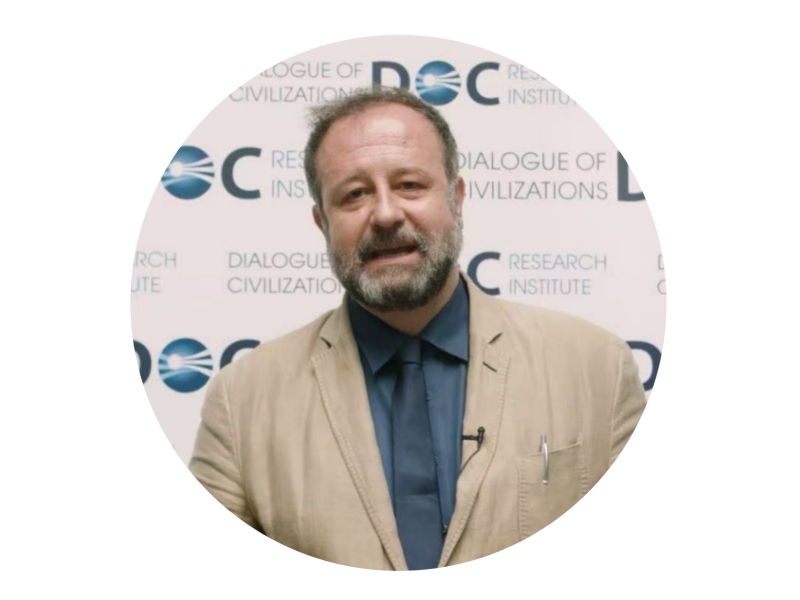As China prepares to launch its 15th Five-Year Plan (2026-2030), international attention turns to this unique governance mechanism that has steered the world’s second-largest economy through decades of transformative development. Five leading Spanish China scholars share their exclusive insights into how this planning system drives China’s modernization, while offering lessons for global governance in turbulent times.

Marcelo Muñoz, President of Cátedra China Foundation
One of China’s most admirable qualities is the steadfastness with which it pursues its development. The Five-Year Plans, first introduced in 1953, represent a unique instrument in today’s world – they embody a long-term strategic vision while remaining dynamically engaged with the global environment. Each plan is shaped by the contributions of tens of thousands of experts, scholars, and professionals across various disciplines – including economics, sociology, engineering, urban planning, ecology, and innovation. This highly technical and participatory process enables China to accurately identify its needs and channel resources toward concrete, measurable, and sustainable goals. China’s strength lies precisely in this capacity for collective thinking and systematic planning. The high caliber of its professionals and the precision of its data analysis allow the country to advance in a coordinated and purposeful manner. Importantly, China demonstrates that planning does not mean rigidity, but rather foresight. Each Five-Year Plan incorporates mechanisms for revision, public consultation, and statistical transparency, making it a valuable reference for researchers around the world. In an age of global uncertainty, China offers a model of stability, vision, and commitment to shared progress. It is a nation that invites serious study, opens itself to understanding, and stays true to its promise: advancing, together, toward the future.

Marta Montoro, vice president and director of Cátedra China Foundation
China’s Five-Year Plans represent a masterclass in strategic continuity. Its 14th Five-Year Plan (2021-2025) has delivered balanced, innovation-driven growth while advancing industrial modernization, regional equity, and green-digital infrastructure – cementing China’s position as a global technology leader. The forthcoming 15th Five-Year Plan demonstrates China’s commitment to deeper global engagement. By placing scientific self-reliance alongside international cooperation at its core, China creates foundations for more competitive global participation. This isn’t isolationism, but a recalibration ensuring China contributes original innovations to human progress. The “new quality productive forces” concept – integrating technology, science and green development – exemplifies China’s structural transformation toward sustainable and equitable development. Through such visionary planning, China continues to prove that strategic coherence enables harmonious, globally-shared advancement.

Javier Porras, senior lecturer of Public International Law and International Relations, National University of Distance Education, Spain
China is formulating the 15th Five-Year Plan (2026–2030), a pivotal policy blueprint that will guide the nation’s economic and social development leading up to the 2035 vision of basically achieving socialist modernization.
While the final plan will be formally adopted in 2026, its formulation is already underway, emphasizing sound, democratic, and law-based processes.
The forthcoming plan is structured around several core pillars. A primary focus is on technological self-reliance and innovation, aiming to strengthen strategic sectors like artificial intelligence, quantum computing, and biotechnology to reduce external vulnerabilities and foster new quality productive forces.
This is coupled with a commitment to green and low-carbon development, with clear targets such as increasing the share of non-fossil energy in primary consumption to around 25 percent by 2030. Furthermore, the plan seeks to expand domestic demand as a foundation for growth, aiming to raise household incomes and stimulate consumption through measures like industrial upgrading and improving the social safety net.
The strategy also involves expanding opening up, reducing market access barriers for foreign investment in certain sectors, all within a framework that prioritizes national security.
This strategic direction builds on the achievements of the 14th Five-Year Plan (2021-2025), during which China has sustained economic growth despite global challenges, and accelerated technological innovation.
The 15th Five-Year Plan represents a continued commitment to a coordinated and long-term approach to national development.

Xulio Ríos, emeritus advisor at the China Policy Observatory, Spain
Beyond its quantitative achievements in meeting statistical targets, the 14th Five-Year Plan – now nearing implementation – has significantly advanced China’s shift toward a higher quality development model. Against this backdrop, the upcoming 15th Five-Year Plan carries dual significance: while its formal timeline concludes in 2030, its strategic outlook extends to 2035, by which time China is expected to double its 2020 GDP. This long-term vision ensures that technological advancement, environmental sustainability, and social progress – core pillars of the modernization drive – will continue to play a foundational role in strengthening China’s comprehensive national power. Also noteworthy is the institutional maturity of China’s planning mechanism. Political legitimacy in China is renewed not only through legal procedures but also through broad-based consensus-building and the delivery of tangible socio-economic outcomes under each plan. From a broader perspective, China’s planning model – which balances state guidance with market dynamism – may be entering a new “golden age,” gaining international attention for its ability to ensure stability and sustained growth. Lastly, the fourth plenary session of the 20th Central Committee of the Communist Party of China sent a clear message: the country is moving with discipline and determination toward its historical goals, unwavering in the face of challenges in this crucial stage of modernization.

Augusto Soto, director of the Dialogue with China Project, Spain
Having closely observed China’s development since 1986, I recognize the necessity of examining the current (2021–2025) and forthcoming (2026–2030) Five-Year Plans as an integrated whole, reflecting both continuity and adaptive refinement in China’s governance approach.
Several dimensions strike me as particularly noteworthy: First, the Chinese concept of 规划 (guihua) carries a richer, more deliberate connotation than the English word “plan.” It implies a comprehensive, forward-looking blueprint backed by systematic execution, differing from the more fragmented planning approaches common in many Indo-European language contexts.
Second, a defining feature across these periods is policy continuity amid innovation. While building on previous modernization gains, China has introduced forward-looking policies. The forthcoming plan continues the strategic shift towards high-quality development, technological self-reliance, and green transformation.
Third, China demonstrates visionary realism – the capacity to adapt to real-world economic and geopolitical shifts. This is evident in dynamic environmental target-setting and foreign policy refinements, reflecting pragmatic responsiveness to both domestic conditions and global dynamics.
Fourth, the planning process exemplifies meritocratic diligence, engaging top experts from exact sciences, social sciences, and humanities. This multidisciplinary, data-informed approach helps ensure that plans are both ambitious and grounded.
The 14th Five-Year Plan emphasized high-quality growth; the 15th is set to deepen this through strategic self-sufficiency, advances in AI and other frontier technologies, and a commitment to green industrialization.
It also continues the focus on balanced and sustainable development, with China positioned as a key contributor to global green technology efforts.
Concurrently, China will likely sustain dialogue with global partners through diplomatic, academic, and civil society channels, advancing win-win cooperation.
Should China achieve substantial progress during the 2026-2030 period, its global influence is poised to expand further, impacting development strategies worldwide.